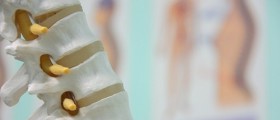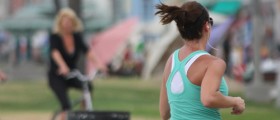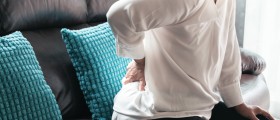
Spinal disc herniation is usually known as a slipped disc. Spinal disc herniation is a medical condition which affects the spine. The outer, fibrous ring of an intervertebral disc tears which then allows the soft central portion to bulge out. The condition causes a lot of pain in almost all cases.
Signs and Symptoms of Spinal Disc Herniation
Signs and symptoms of spinal disc herniation are not always the same and they mainly depend on the exact location of herniation. The type of the soft tissue which is involved plays a part in signs and symptoms as well. The most common symptom is pain. Pain can range from mild over moderate to severe and also unrelenting pain located in the neck or lower back. The pain is not only felt in the mentioned areas but it may also radiate into the regions which are innervated by the affected nerve roots. In case of mild pain, it is usually only the disc that is injured.
In cases where herniated discs are not diagnosed immediately, the patient may experience pain in knees, feet and thighs.
Some of other commonly reported symptoms of herniated disc are numbness, tingling, muscular weakness, paralysis, paresthesia and even deterioration of reflexes. Sciatica is another common symptom but only in situations when herniated disc affects the lumbar region and one of lumbar nerve roots gets irritated. An interesting thing about pain initiated by herniated disc is that it is not a pulsating one and it does not come and go away. Instead, it is a continuous one, especially in the specific position of the body.
The fact is that patient may be suffering from herniated disc without even experiencing any symptoms. This happens in cases when the extruded nucleus pulpolus material does not press on soft tissues or nerves.
Another characteristic of herniated discs is that symptoms are only located on one side of the body.
Cause of Spinal Disc Herniation
There are not that many causes of spinal disc herniation. Some causes are seen a lot more often than others. For instance, general wear and tear is a rather common cause of herniated discs, especially when a person is performing a job that requires him or her to sit constantly. In this case, minor back pain and chronic back tiredness are the most obvious signs.
On the other hand, jobs which require heavy lifting are also known to cause spinal disc herniation. While performing these jobs a quick injury to lumbar discs occurs, especially when people lift while being bent at the waist. A lot of people make this mistake because the lifting should be done with the assistance of the legs while the back remains straight.
Improper posture is also known to lead to wear and tear and people need to keep their back straight because that way the initial pressure is equalized on all parts of the disc.
There are three types of disc herniation and these are cervical, thoracic and lumbar. In case of cervical herniation, the condition takes place in the neck and the symptoms are known to affect the skull, neck, shoulder, arm and hand. Thoracic herniation is pretty uncommon due to the fact that thoracic discs are quite stable. Lumbar herniation affects the lower back. This is why in case of this herniation it is the lower back, buttocks, thigh and genital region that are affected by the symptoms. The pain is also known to radiate to the foot and toe in case of lumbar herniation.
Diagnosis and Treatment of Spinal Disc Herniation
It is difficult for a person to diagnose a herniated disc on its own and that is why only medical professionals can establish a correct diagnosis. The doctor will take history, symptoms and physical examination all into consideration when he or she is about to make a diagnosis. Certain tests will be done in order the other conditions to be ruled out. Only when the proper diagnosis is made the doctor will be able to create a treatment plan and discuss potential treatment options with the patient.
In most cases of spinal disc herniation there is no need for surgery as herniated discs will heal on their own within a period of six weeks. Surgery is considered as the last option and before it the patients will be advised to try treating the problem with an anti-inflammatory approach. In most cases non-steroidal anti-inflammatory medications are used. An alternative option to these medications is an injection of cortisone into the spine. Exercising and stretching, along with prescribed pain killers is mostly recommended for people who suffer from herniated discs. Physical therapy is also commonly used option. Apart from these, there are other possible treatments as well.
A certain small-sample study investigated the percentage of focal discs protrusions in volunteers. The results showed that most of them had partially herniated discs but were symptom-free. This drives to conclusion that most people are actually suffering from this condition without even knowing it and it is a matter of time when herniation will be complete causing symptoms to occur.






-Causes,-Symptoms,-Diagnosis,-Treatment_f_280x120.jpg)










Your thoughts on this
Loading...